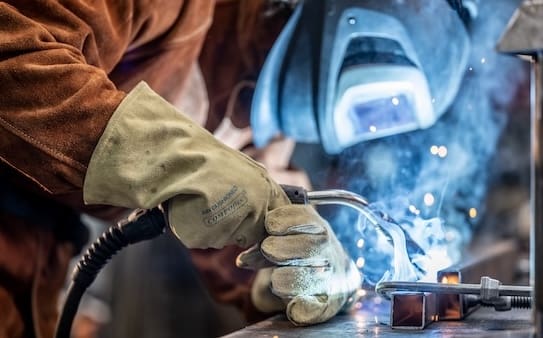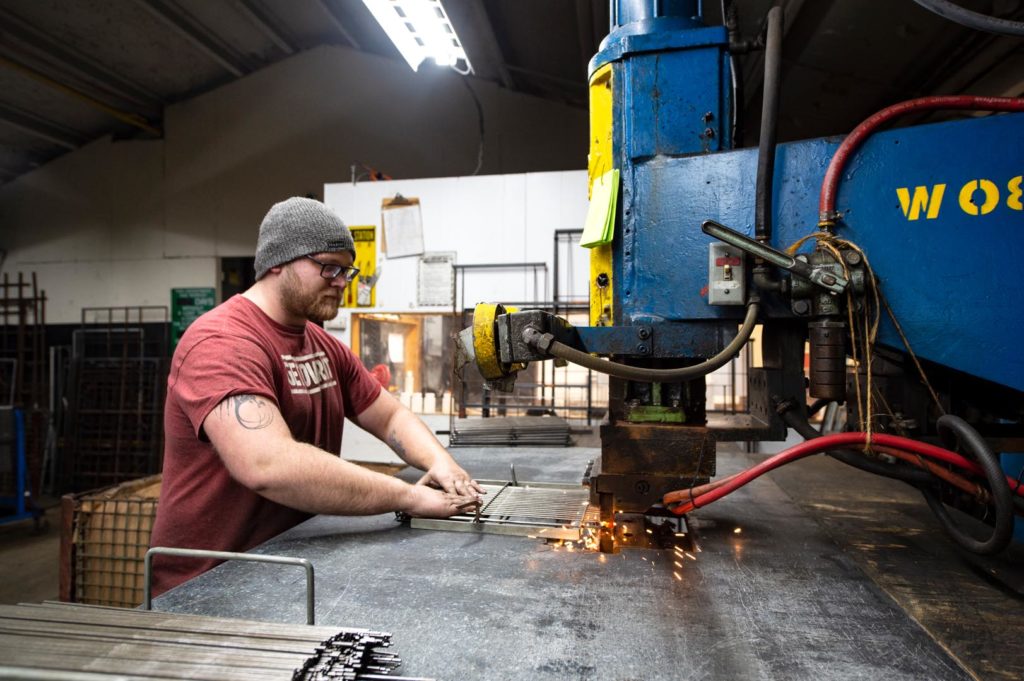Typical Welding Repair Service Issues and Just How to Address Them Effectively
Welding repair services frequently experience a series of concerns that can jeopardize the stability of the final item. Typical issues include insufficient penetration, porosity, and imbalance, amongst others. Each issue offers one-of-a-kind obstacles that call for details methods for resolution. Recognizing these problems is important for welders aiming to boost their outcomes and abilities. This conversation will check out these usual welding repair work issues and reliable techniques to address them.
Poor Infiltration
Poor infiltration happens when the weld metal fails to fully fuse with the base material, resulting in weak joints and prospective architectural failures. This concern frequently stems from not enough warmth input, incorrect electrode angle, or incorrect welding speed. Welders might run into inadequate infiltration due to a miscalculation of the necessary specifications for a details material density or type. Furthermore, contamination on the base material's surface area can prevent reliable bonding, aggravating the trouble. To address insufficient infiltration, welders must ensure suitable settings on their devices and keep a clean job surface. Normal assessment of welds is advised to recognize any type of deficiencies early, permitting for prompt improvements and the prevention of endangered architectural honesty in bonded settings up.
Porosity
Porosity is an usual defect in bonded joints that materializes as tiny gas bubbles entraped within the weld steel. This problem can jeopardize the honesty of the weld, resulting in reduced stamina and possible failure under anxiety. Montana Mobile Welding and Repair. Porosity normally arises from contamination, wetness, or incorrect welding techniques, which permit gases to escape into the molten weld pool. To resolve porosity, welders should ensure appropriate surface area prep work, preserve a clean working environment, and utilize appropriate welding specifications. Furthermore, picking the ideal filler material and securing gas can mitigate gas entrapment. Routine assessment and screening of welds can aid recognize porosity early, guaranteeing timely restorative activities are taken, thereby preserving the top quality and reliability of the bonded framework
Misalignment
Misalignment in welding can arise from different factors, including inappropriate arrangement and thermal expansion. Recognizing the source is important for reliable resolution. A number of modification techniques are readily available to realign parts and ensure structural honesty.
Sources of Misalignment
Welding imbalance typically stems from a selection of underlying problems that can jeopardize architectural honesty. One main reason is inappropriate fit-up of components prior to welding, which can cause gaps and unequal surface areas. Variants in thermal growth during the welding procedure can additionally lead to distortion, particularly if the materials being joined have various coefficients of expansion. Furthermore, poor securing and fixturing might fall short to hold parts firmly in place, leading to movement during welding. Badly kept equipment, including welding makers and tools, might present incongruities in the weld grain, additional adding to imbalance. Ultimately, operator error, stemming from inadequate training or experience, can likewise play a significant function in creating misaligned welds.
Correction Techniques Offered
Attending to imbalance efficiently needs a mix of corrective techniques customized to the details problems available. One typical method is using components or jigs to hold parts in the right placement throughout welding, ensuring regular positioning. In addition, preheating the materials can assist reduce distortion and improve fit-up. For considerable imbalance, mechanical adjustment methods, such as making use of hydraulic jacks or clamps, can be employed to fix the position prior to welding. Post-weld heat therapy may also be needed to eliminate anxieties triggered by misalignment. Mindful assessment and adjustment during the configuration stage can avoid misalignment concerns from becoming significant problems, advertising a smoother welding process and enhancing total structural honesty.
Distortion
Distortion is a common obstacle in welding that can emerge from numerous variables, including unequal heating & cooling. Understanding the causes of distortion is important for executing efficient avoidance techniques. Addressing this problem not just improves architectural honesty however likewise enhances the total quality of the weld.
Reasons for Distortion
When subjected to the intense warmth of welding, products often undertake modifications that can result in distortion. This phenomenon primarily arises from thermal development and tightening during the welding procedure. As the weld location warms up, the product increases; upon cooling, it gets, which can produce internal tensions. On top of that, unequal heating across a workpiece can aggravate these stress and anxieties, causing bending or flexing. The sort of material also plays a substantial duty; steels with differing thermal conductivity and coefficients of growth may respond differently, resulting in uncertain distortions. Additionally, poor joint design and poor fixturing can contribute to imbalance during welding, increasing the possibility of distortion. Comprehending these causes is essential for effective welding repair work and prevention approaches.
Prevention Techniques
Reliable avoidance strategies for distortion during welding focus on regulating warmth input and making certain proper joint design. Preserving a consistent heat input aids to minimize thermal growth and tightening, which can lead to distortion. Utilizing methods such as preheating the work surface can additionally decrease the temperature gradient, advertising uniform home heating. In addition, selecting appropriate joint layouts, such as T-joints or lap joints, can improve stability and lower stress focus. Implementing correct fixturing to secure the workpieces in location additionally aids in maintaining positioning during the welding process. Staggered welding sequences can disperse warm extra evenly, preventing local distortion. By applying these approaches, welders can significantly reduce the likelihood of distortion and boost the general high quality of their welds.
Splitting
Splitting is a common problem come across in welding repairs, commonly resulting from numerous variables such as incorrect cooling rates, product choice, or poor joint prep work. The incident of splits can substantially compromise the integrity of the weld, bring about possible failings during procedure. To resolve this best welder for aluminum concern, welders must first assess the origin, ensuring that products work and appropriately picked for the specific application. Furthermore, regulating the cooling price during the welding procedure is necessary; quick cooling can cause anxiety and cause fracturing. Proper joint design and prep work additionally add to reducing the danger. Executing these approaches can boost weld quality and resilience, eventually decreasing the possibility of fracturing in finished weldments.

Insufficient Combination
A substantial issue in welding fixings is insufficient combination, which Source takes place when the weld steel does not appropriately bond with the base product or previous weld passes - Fabrication. This flaw can result in weak points in the joint, possibly compromising the stability of the bonded structure. Variables adding to incomplete fusion consist of inadequate warm input, inappropriate welding method, and contamination of the surface areas being joined. To address this problem successfully, welders should assure proper pre-weld cleansing and surface area preparation, along with change their welding specifications to attain ample penetration and fusion. Normal inspection throughout the welding procedure can also aid recognize incomplete fusion early, permitting prompt corrective steps to enhance the general top quality of the weld
Overheating
While welding repairs can boost architectural integrity, overheating offers a considerable difficulty that can lead to product degradation. Too much heat during welding can modify the mechanical homes of metals, leading to lowered toughness, enhanced brittleness, and bending. This phenomenon is particularly crucial in high-stress applications where architectural integrity is vital. Recognizing overheating can entail aesthetic assessments for discoloration or distortion, in addition to keeping an eye on temperature during the welding procedure. To mitigate the threats related to getting too hot, welders should utilize proper strategies, such as regulating warm input, adjusting traveling rate, and utilizing appropriate filler materials. Furthermore, executing pre- and post-weld warm therapies can aid restore product properties and improve the general top quality of the fixing, making certain long-lasting performance and security.
Frequently Asked Concerns
What Are the Usual Indications of a Welding Flaw?

Exactly How Can I Examine My Welds for High quality?
To examine welds for top quality, one can make use of visual evaluations, ultrasonic screening, and radiographic approaches. Each technique guarantees structural honesty, recognizes defects, and validates adherence to specified standards, eventually enhancing the reliability of the welded joints.
What Security Precautions Should I Take While Welding?
When welding, one must focus on safety and security by wearing appropriate personal safety tools, making sure appropriate ventilation, protecting flammable materials away, maintaining a clean work space, and being aware of surroundings to avoid injuries and crashes.
Can I Repair a Weld Without Renovating the Entire Joint?
Fixing a weld without redesigning the entire joint is possible, relying on the damages (Belgrade). Strategies such as grinding, including filler product, or making use of a welding procedure can properly address particular problems while preserving the surrounding framework
What Devices Are Important for Effective Welding Repairs?
Crucial tools for efficient welding repair services consist of a welding equipment, wire brush, grinder, protective website here gear, clamps, and filler products. Each device plays a crucial function in guaranteeing high quality and safety during the repair service process. Porosity normally arises from contamination, wetness, or improper welding techniques, which allow gases to get away into the liquified weld pool. Inadequately conserved equipment, consisting of welding makers and tools, might introduce inconsistencies in the weld bead, additional adding to misalignment. When subjected to the extreme heat of welding, materials frequently undergo changes that can lead to distortion. Breaking is a common problem experienced in welding repair work, typically resulting from numerous aspects such as improper air conditioning prices, material selection, or inadequate joint prep work. A considerable concern in welding repair services is incomplete combination, which occurs when the weld steel does not adequately bond with the base product or previous weld passes.